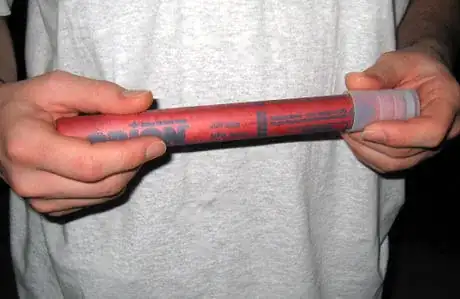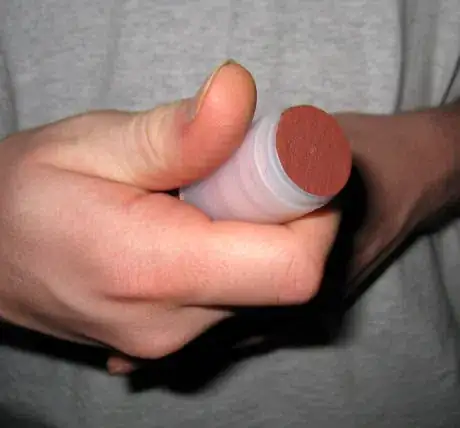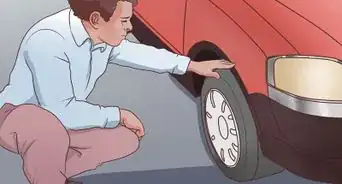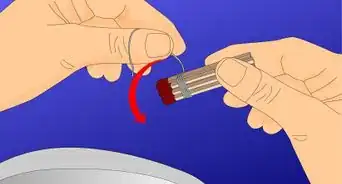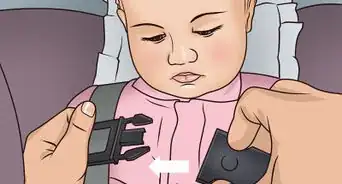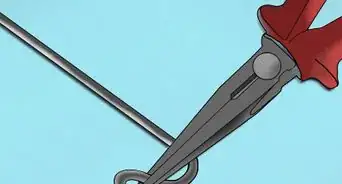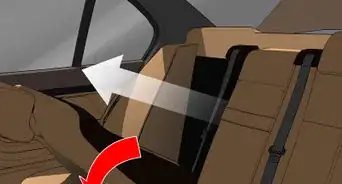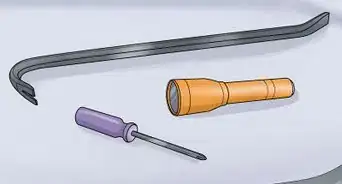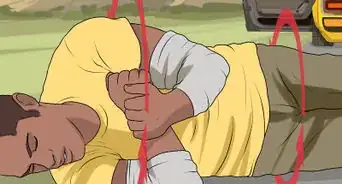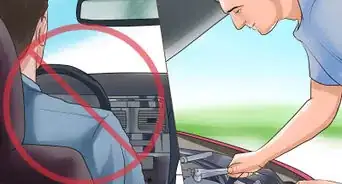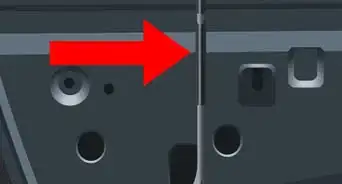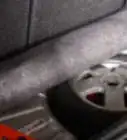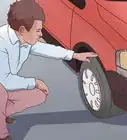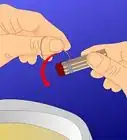X
wikiHow is a “wiki,” similar to Wikipedia, which means that many of our articles are co-written by multiple authors. To create this article, 16 people, some anonymous, worked to edit and improve it over time.
This article has been viewed 154,016 times.
Learn more...
You have probably seen road flares in use. They are highly effective for warning approaching motorists of danger. You may even have some in the emergency kit in the back of your car. But have you ever lit one yourself? It's not hard, but like changing a tire, it's best if you practice and know what to expect before you need to use them.
Steps
-
1Have a location in mind to place the flare before you light it. A level, paved surface, free of dried vegetation, is best. If you are lighting the flare for roadside use, you should place multiple flares well behind the vehicle, so that oncoming traffic has time to move over. A hundred steps behind or "upstream" of your vehicle is a good distance for the first one. Make certain there is no gasoline leaking from any cars nearby and if there is gasoline leaking, consider NOT using a flare.[1]
-
2Locate the cap at one end of the flare. It will generally have a rough striking surface on the outside edge. Remove the plastic lid or cap to expose this surface, if necessary.Advertisement
-
3Look at the cap. Often, the caps are designed with a fold-out tabs or a flat side that will help prevent the lit flare from rolling around. Identify this feature and get it ready before lighting the flare.
-
4Remove the cap, exposing the end of the flare. You may need to twist gently. The end of the flare will have an ignition surface or "button". This is the end you will light.[2]
-
5Hold the flare as far away from your body and face as possible. Stand with your left or right shoulder facing into the wind. Point it away from yourself and others. Also, remember to hold the flare by the middle, with your hand away from the end you will be lighting.
-
6Light the flare much the same way as you would light a match. Rub the end of the flare briskly against the coarse striking surface on the cap. There is no need to strike too firmly. Remember, the flare will spray ignited, molten material from its end so if you are wearing good clothing you may damage your clothing.[3]
-
7Carry the lighted flare pointed downward and away from yourself, so that no burning residues can drip back onto your hand. Keep the burning end of the flare away from hair and clothing.
-
8Replace the cap on the back end of the flare (the end that is not burning).
-
9Set the flare on the ground, away from vehicles and flammable materials and be sure that it will not roll. Do not drop it. If you drop the flare you will have less control over its location, and the flare could break. If you think you need to extend the burn time of a flare, you can stack one burning flare over the other non-burning flare (bottom of burning flare crosses over the head of the non-burning flare).[4]
-
10Make sure that the flare is extinguished before leaving the site. If you wish to extinguish a lighted flare before it burns out, either douse it completely with water or tap the lighted end against the ground to break the burning part off of the rest of the flare. Smothering the flame is unlikely to be effective.[5]
Advertisement
Community Q&A
-
QuestionCan I use it for fun in my backyard, like a firework, or is that illegal?
 Community AnswerIt is not illegal. Just be sure to take all necessary safety precautions.
Community AnswerIt is not illegal. Just be sure to take all necessary safety precautions. -
QuestionIs it okay to store flares in the trunk of my car? What if the car is not garaged but sits outside?
 Community AnswerAs long as the flare is in a dry storage area it should be fine, but if you do have moisture concerns, buy ocean grade flares.
Community AnswerAs long as the flare is in a dry storage area it should be fine, but if you do have moisture concerns, buy ocean grade flares. -
QuestionHow many feet behind my car should the flare be?
 Community AnswerYou should normally set up a flare 300 ft behind your vehicle, because this gives people advance notice that your car is there.
Community AnswerYou should normally set up a flare 300 ft behind your vehicle, because this gives people advance notice that your car is there.
Advertisement
Warnings
- Dispose properly of expired road flares and residue.⧼thumbs_response⧽
- Never light a road flare inside a building or vehicle.⧼thumbs_response⧽
- Some states require non-flammable road flares, in which case you should use a road flare alternative.⧼thumbs_response⧽
- Be certain to set the road flare away from flammable materials, such as dry grass or leaves, and to set it in such a way that it will not roll or blow around in the wind.⧼thumbs_response⧽
- Road flares are not appropriate for marine use, and marine flares are not appropriate for land use. Be certain you have the right kind.⧼thumbs_response⧽
- Some states have laws regarding how many flares a passenger vehicle can carry at a time, again make sure you research it.⧼thumbs_response⧽
- Road flares are pyrotechnics. Use them very carefully, and do not play with them.⧼thumbs_response⧽
- Some states have laws regarding whether or not flares can be carried in a passenger vehicle, make sure you are not breaking any laws. If unsure, ask your local police department.⧼thumbs_response⧽
Advertisement
References
About This Article
Advertisement
